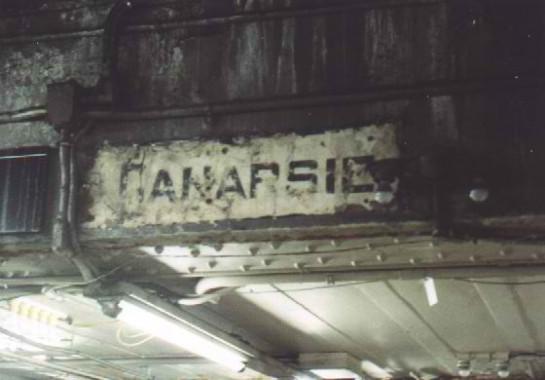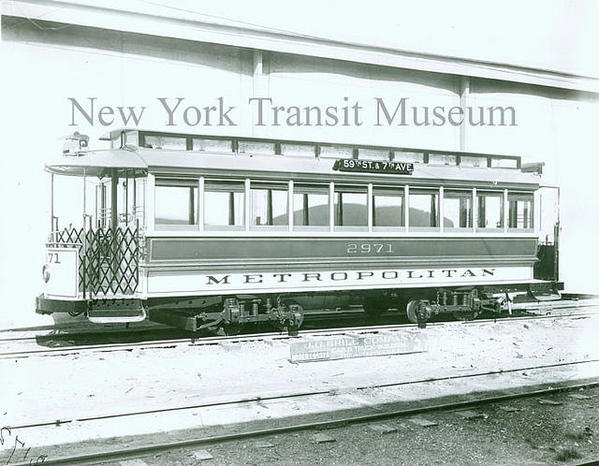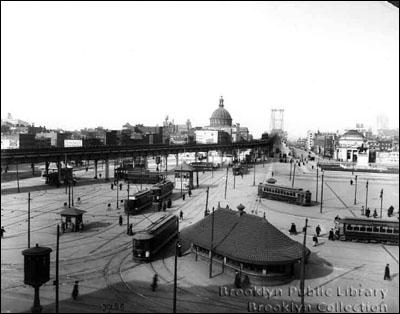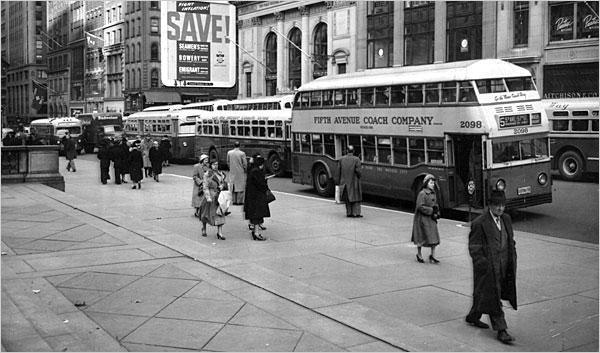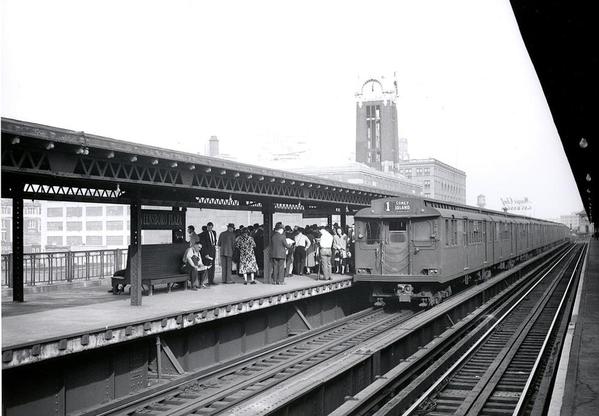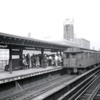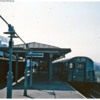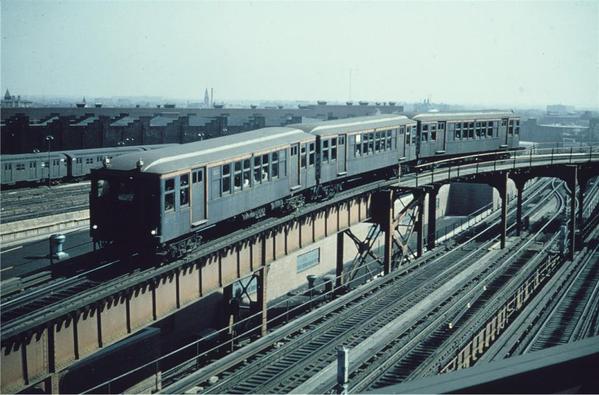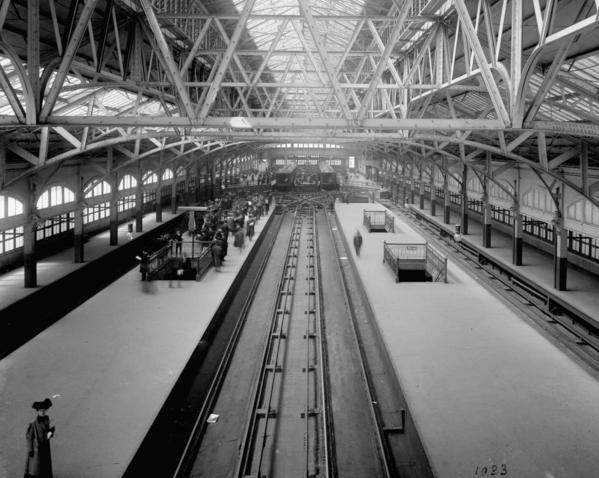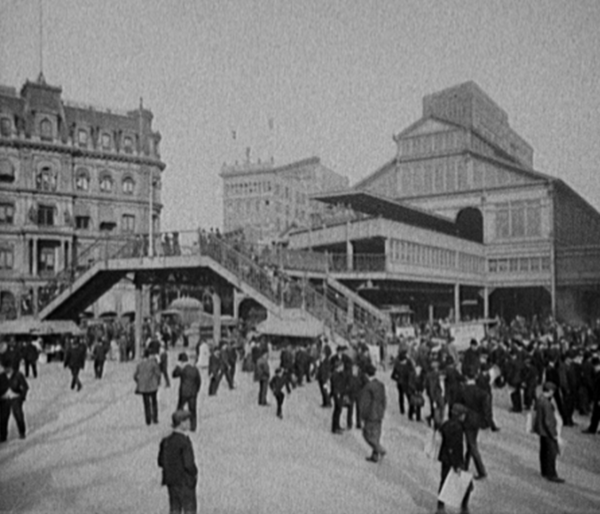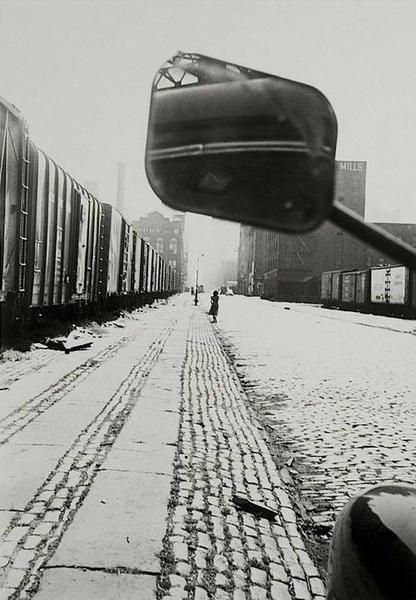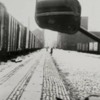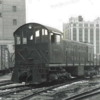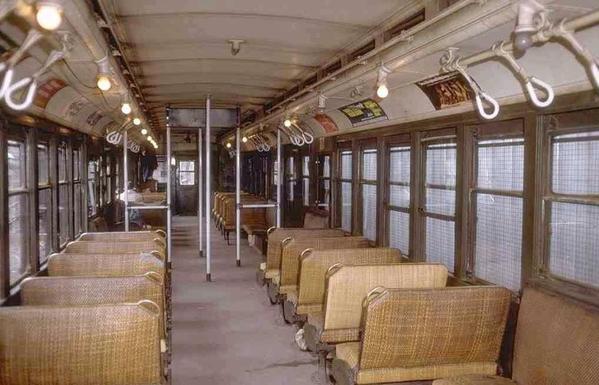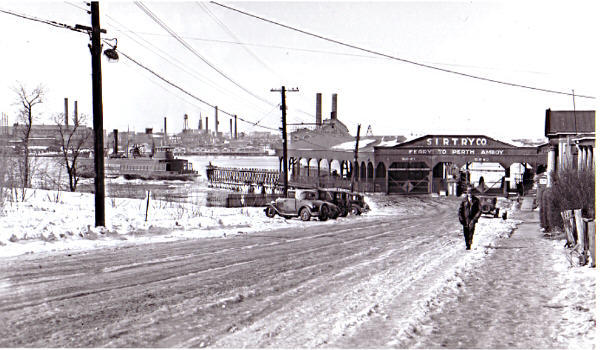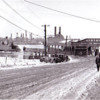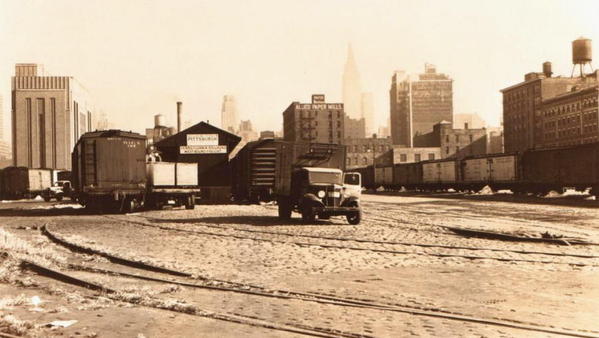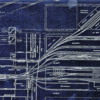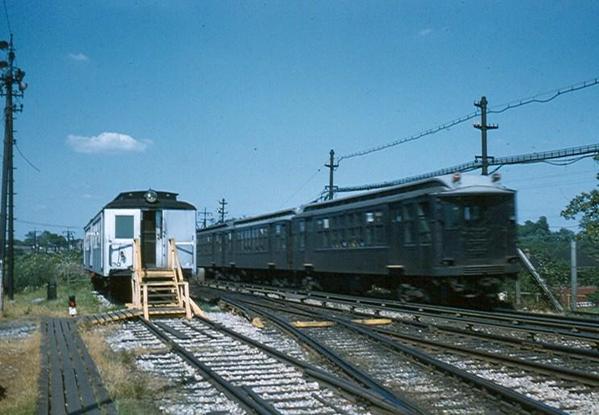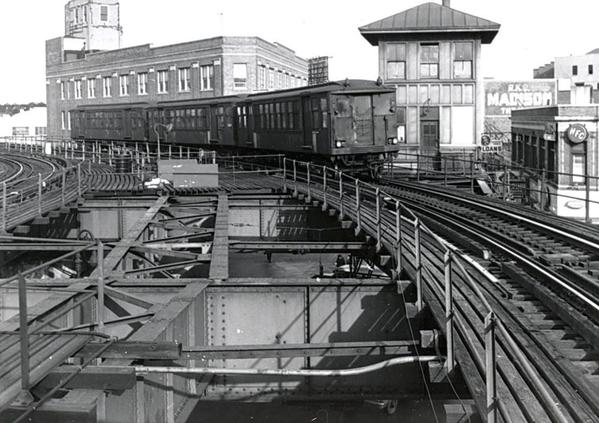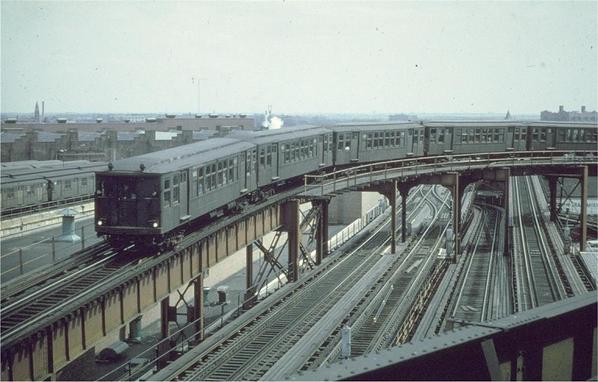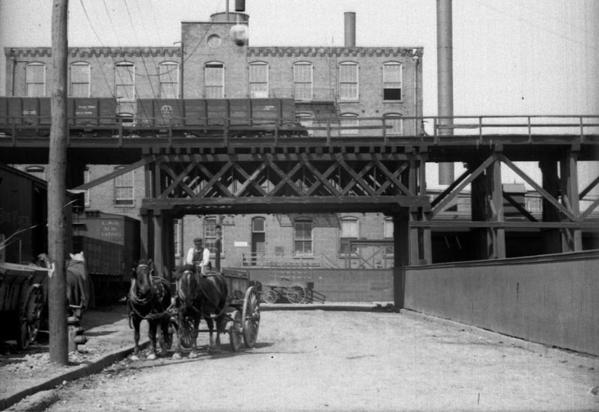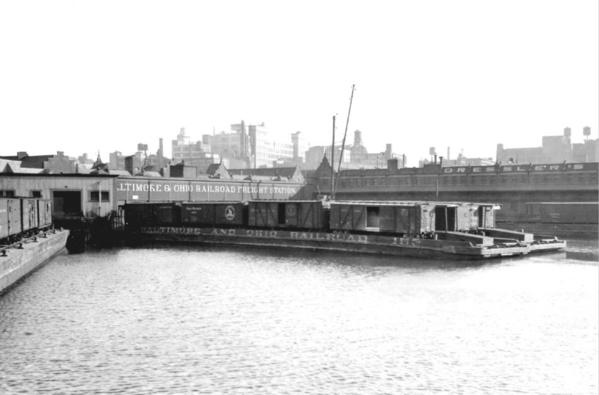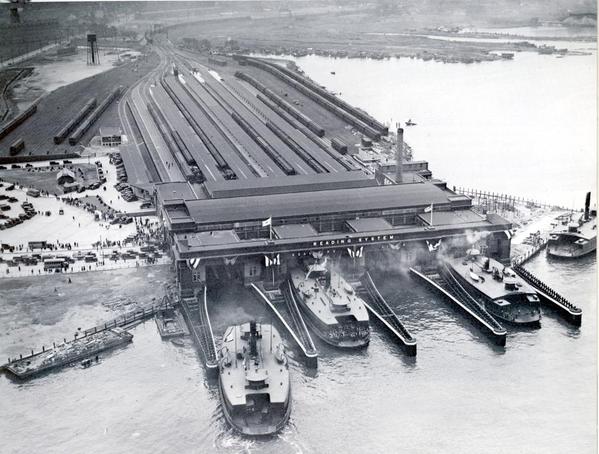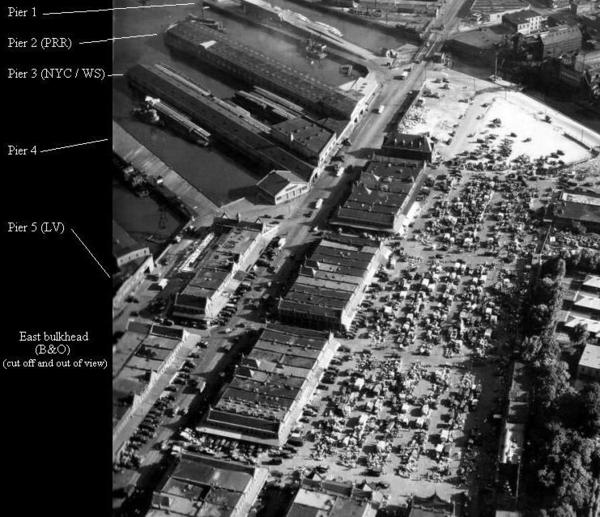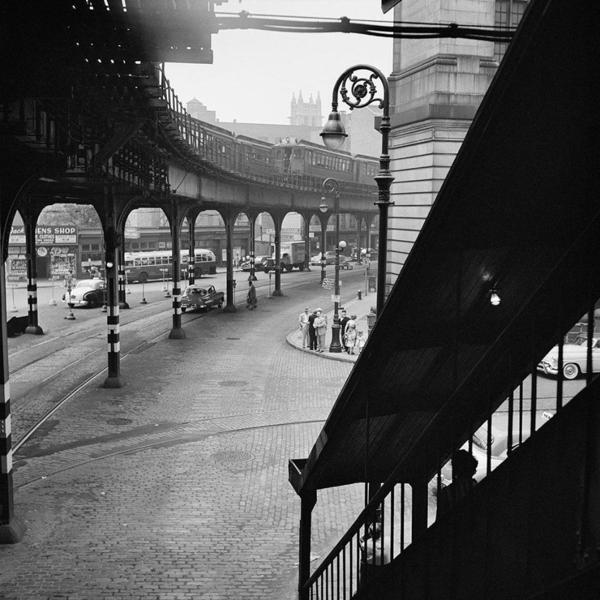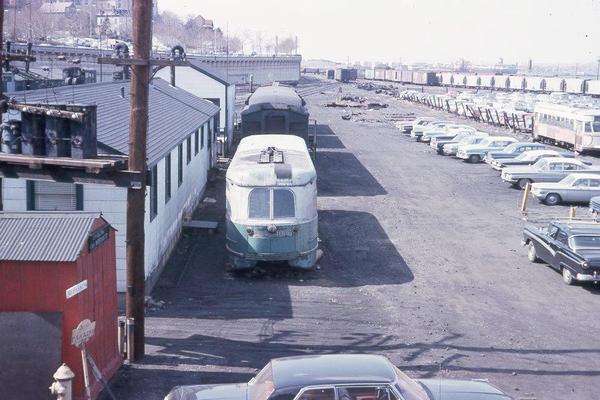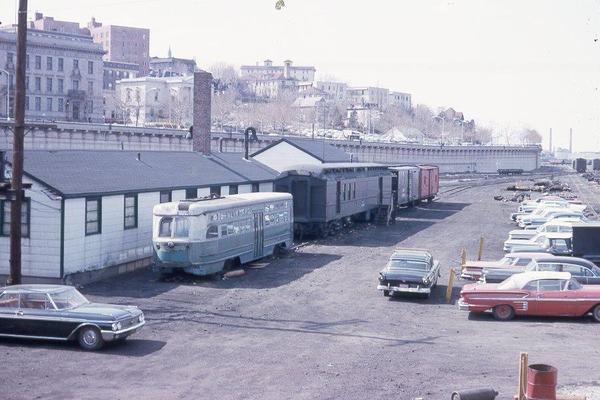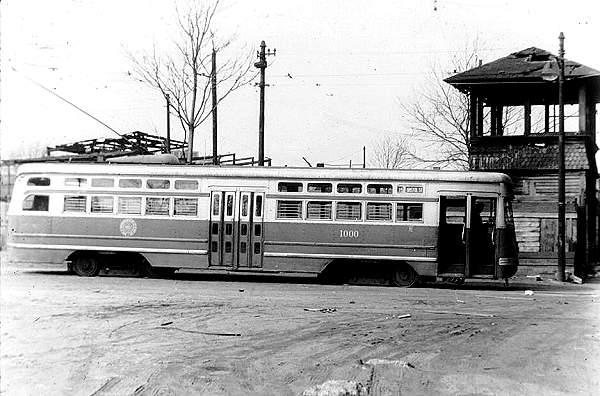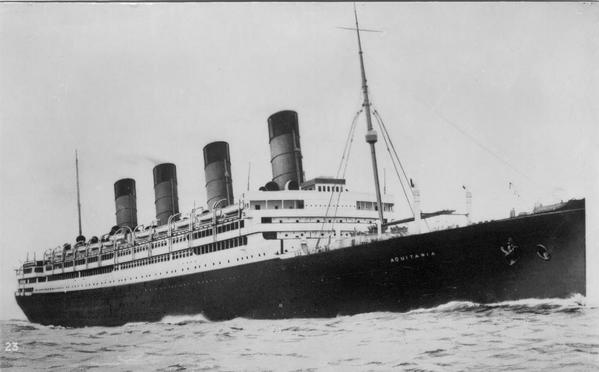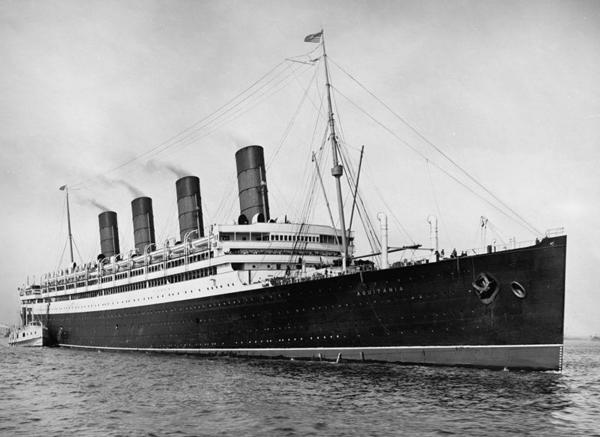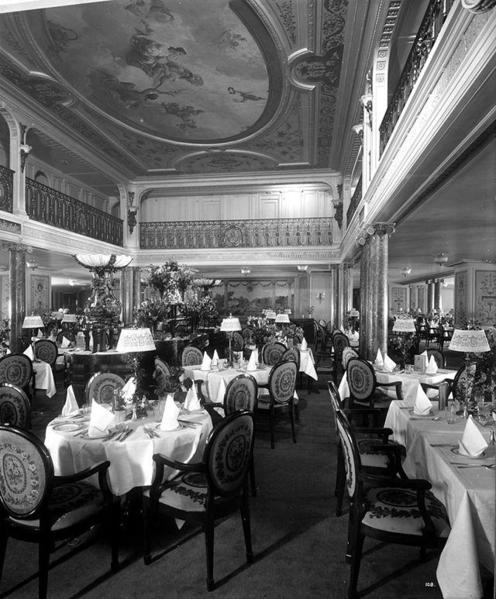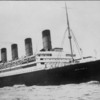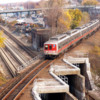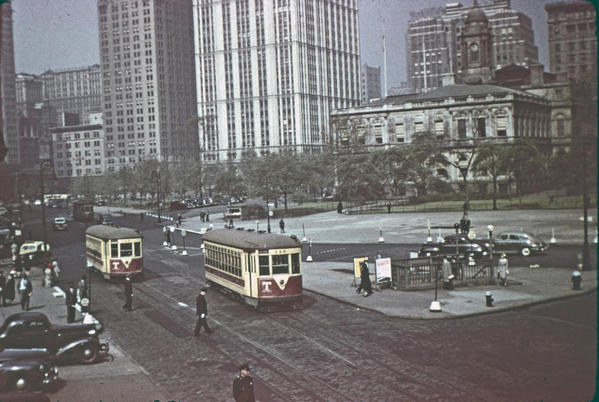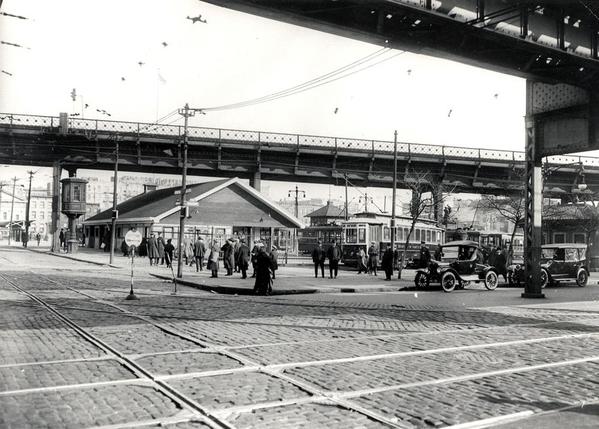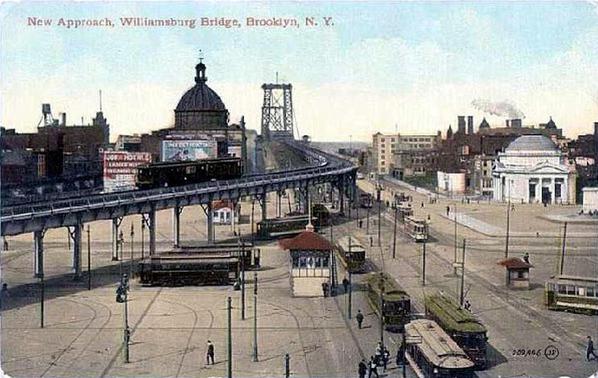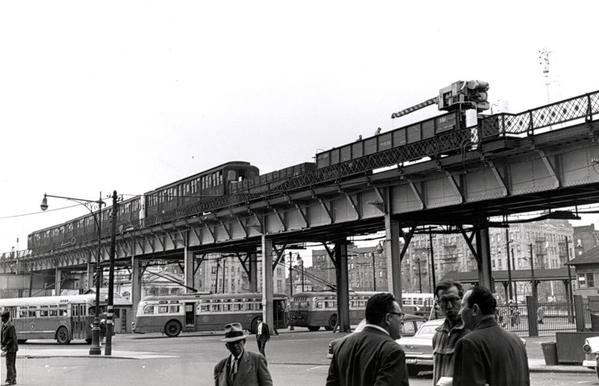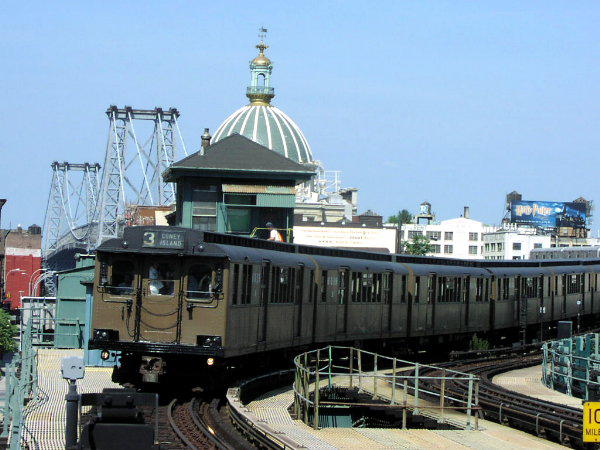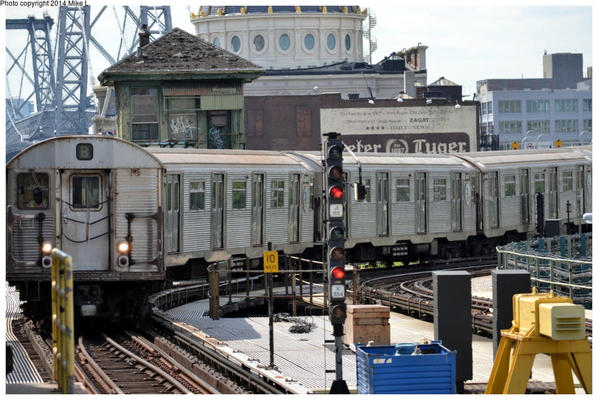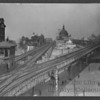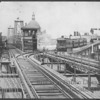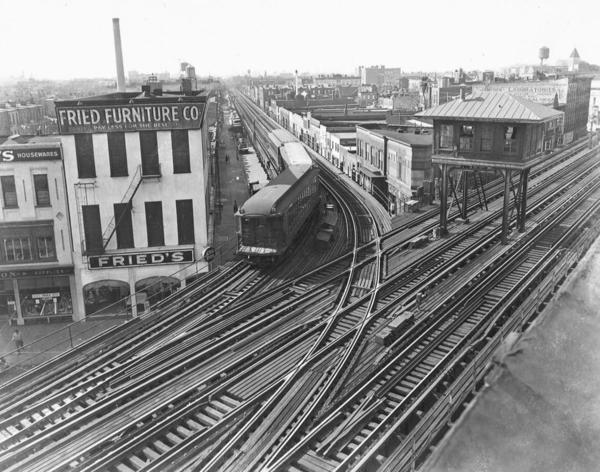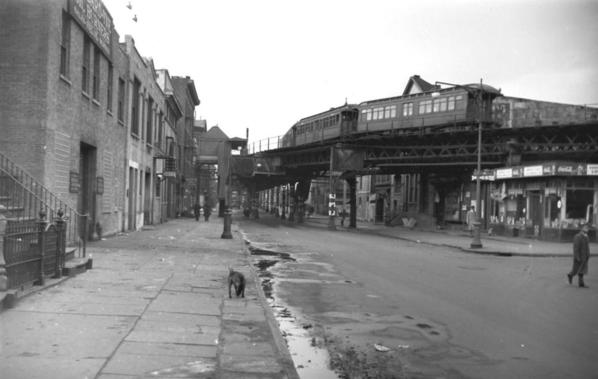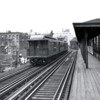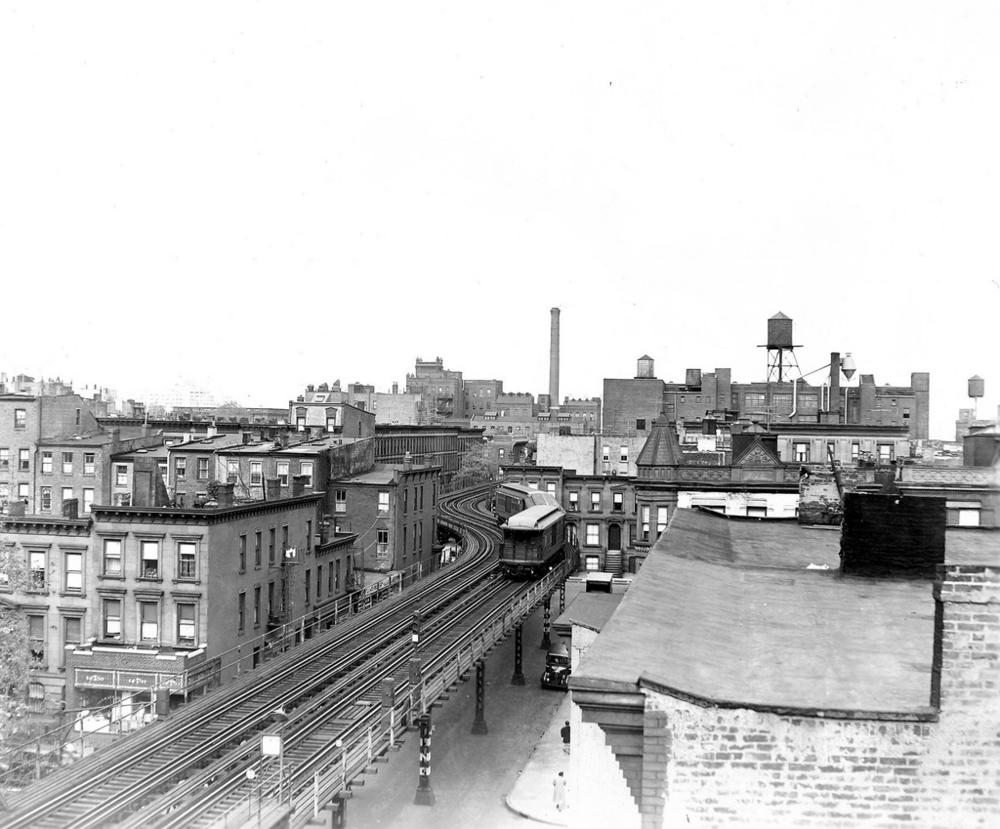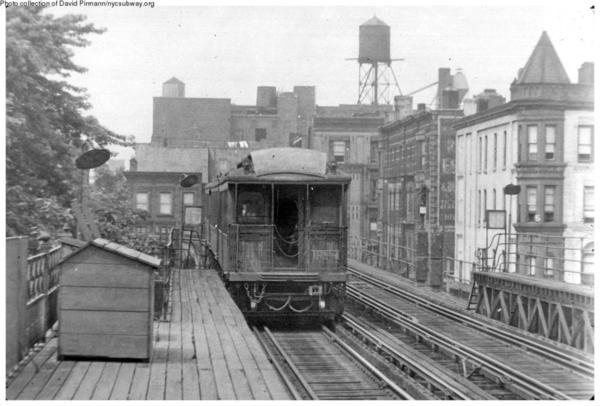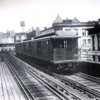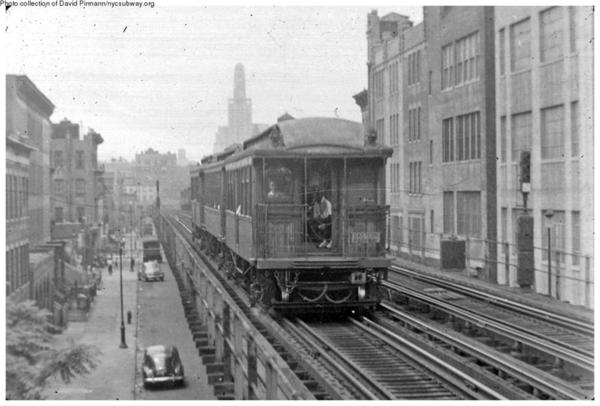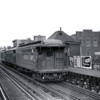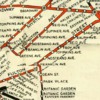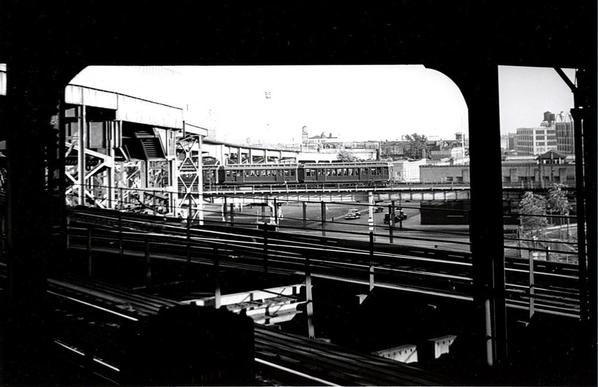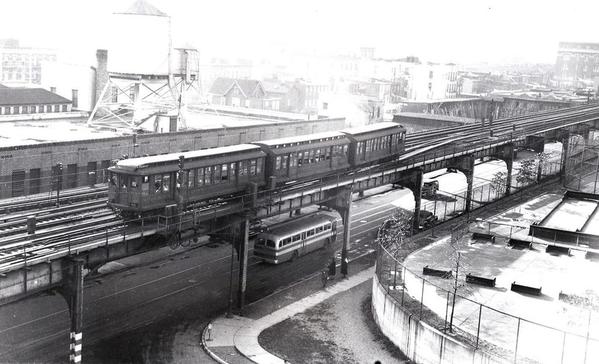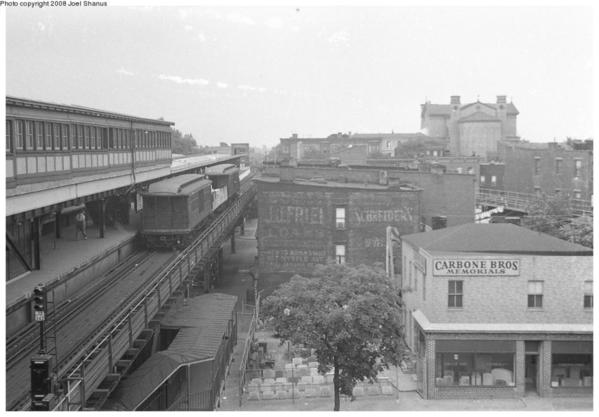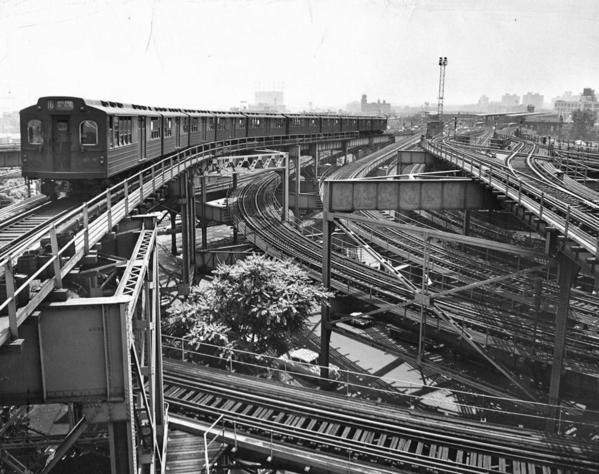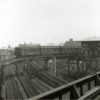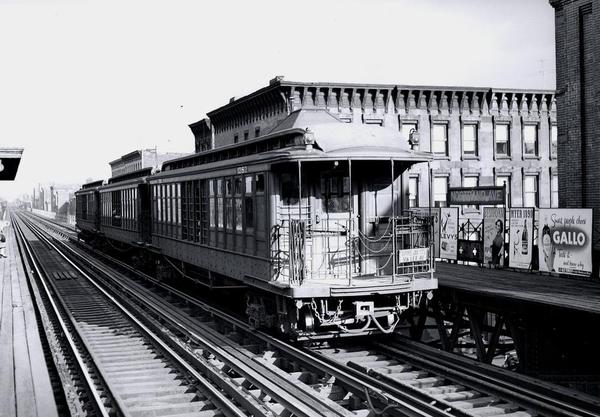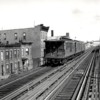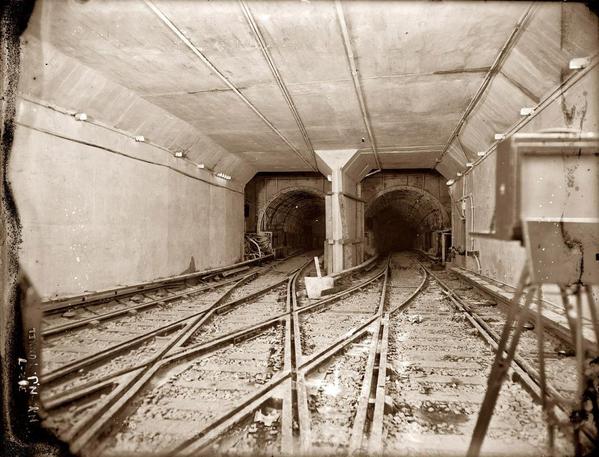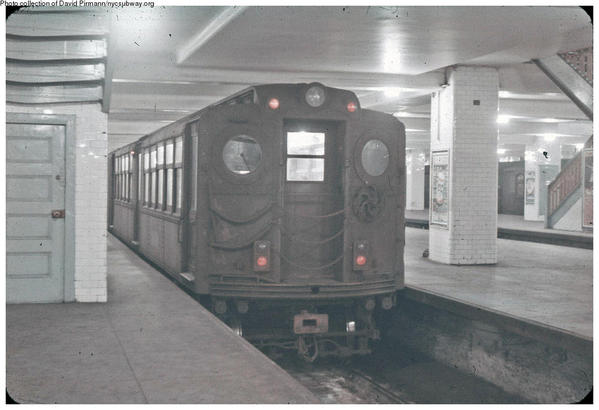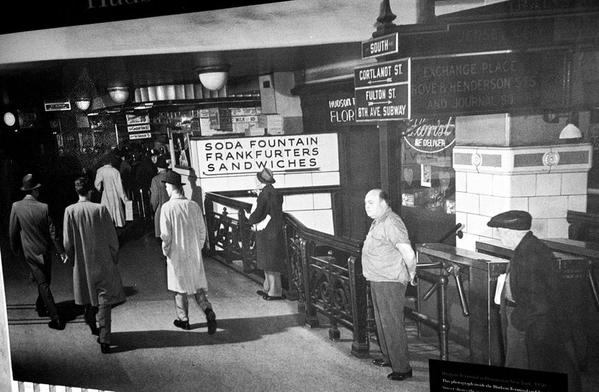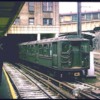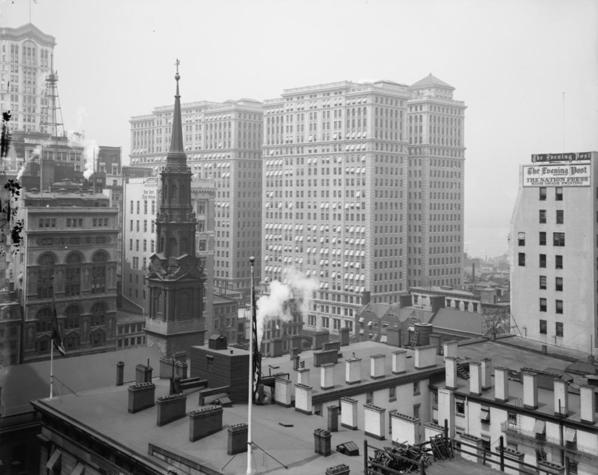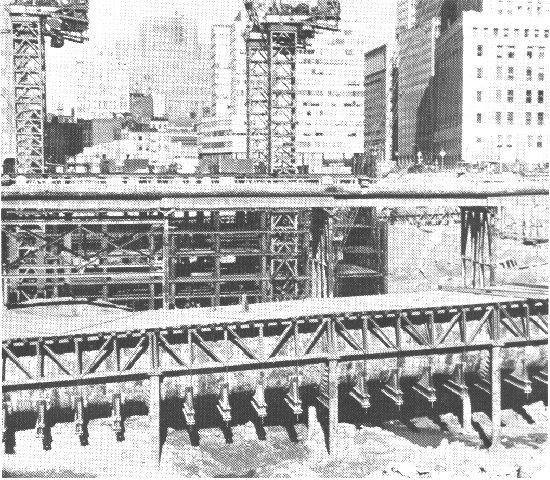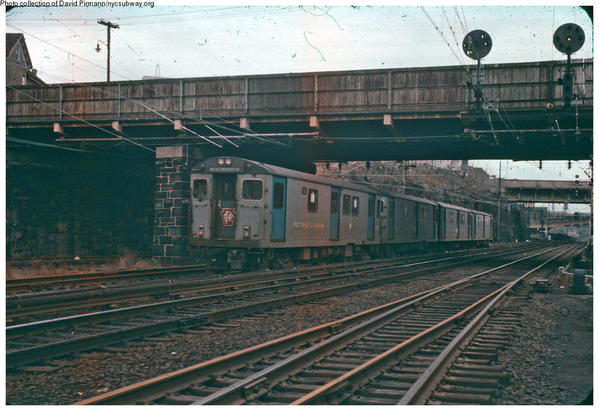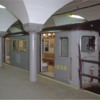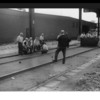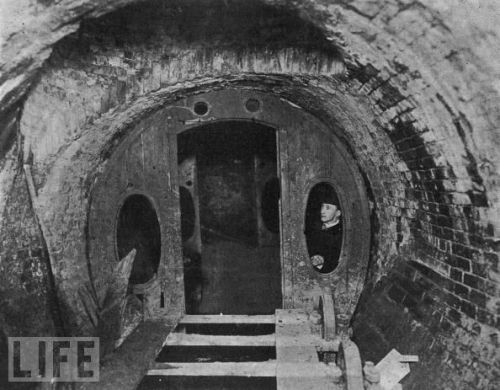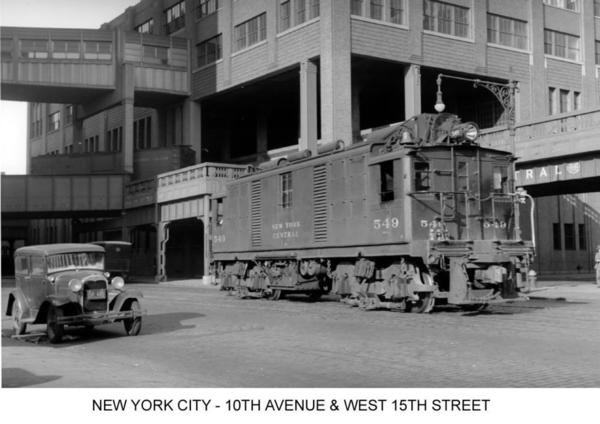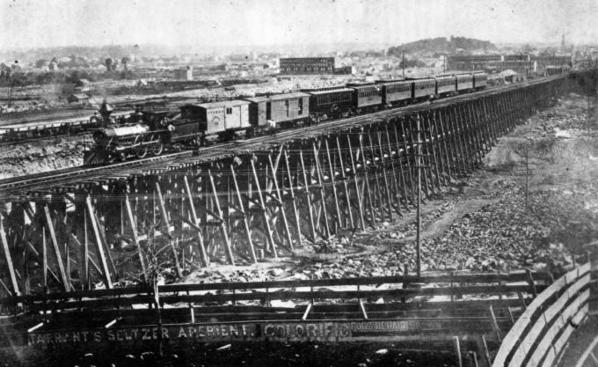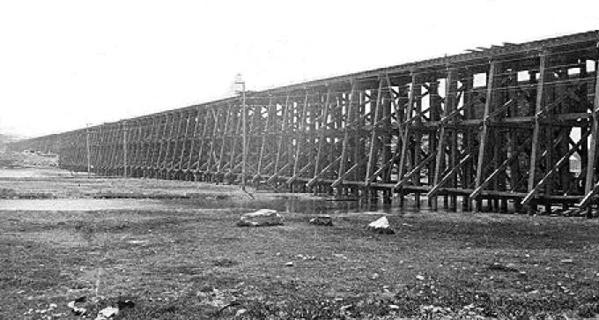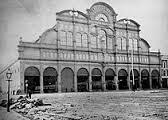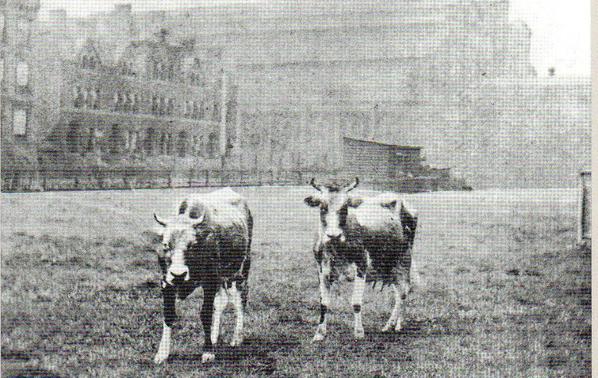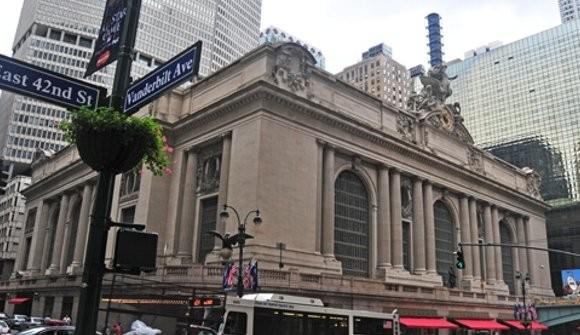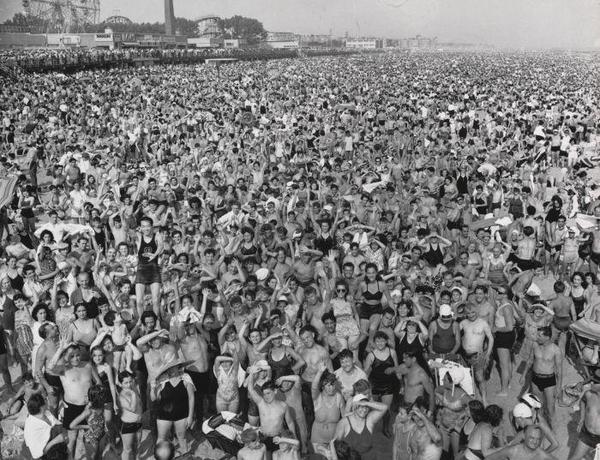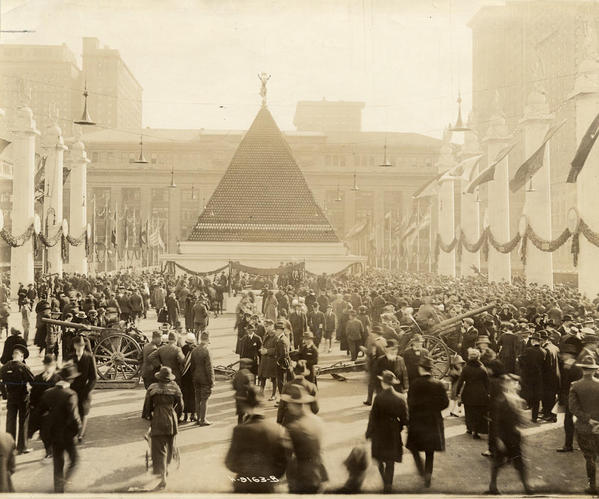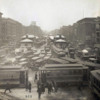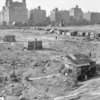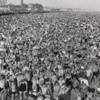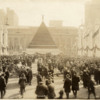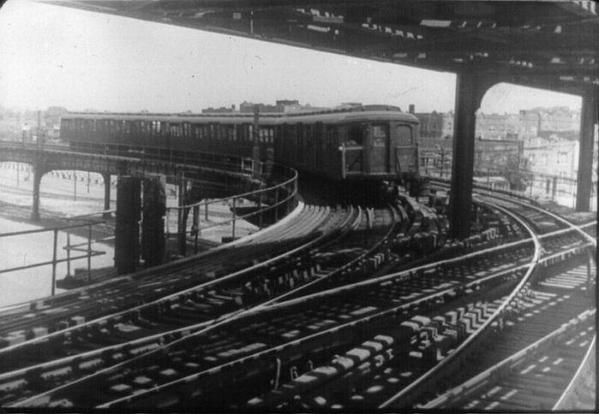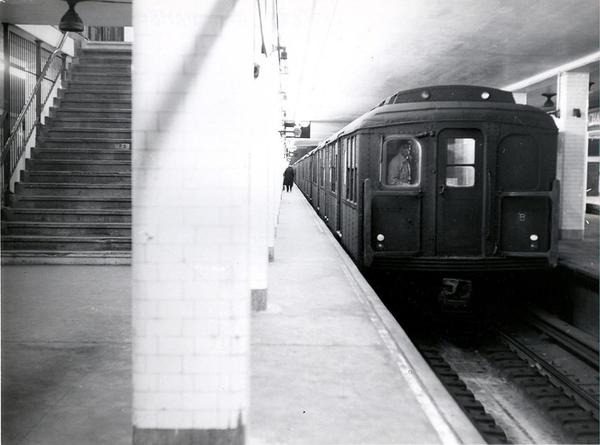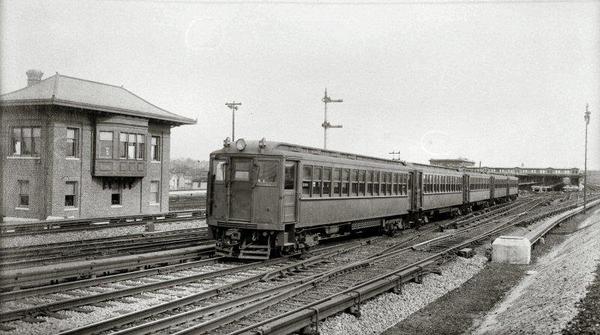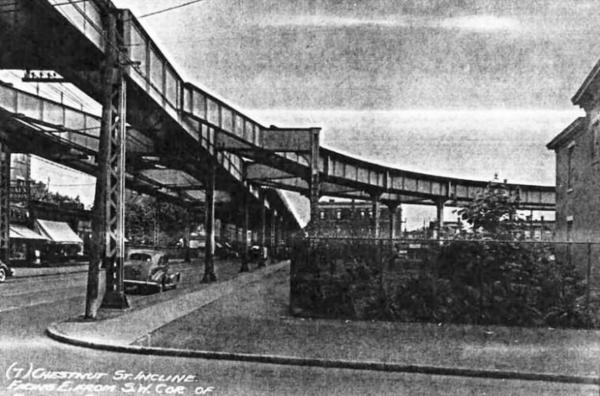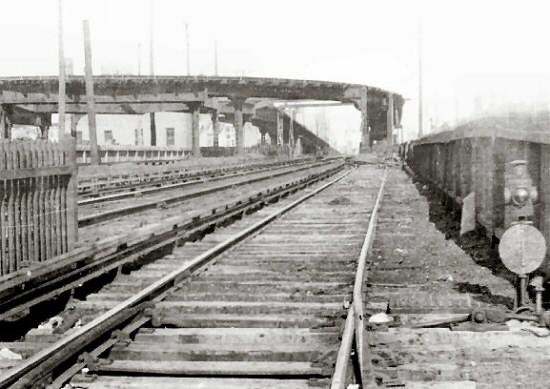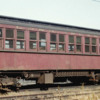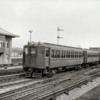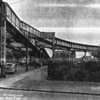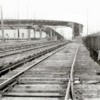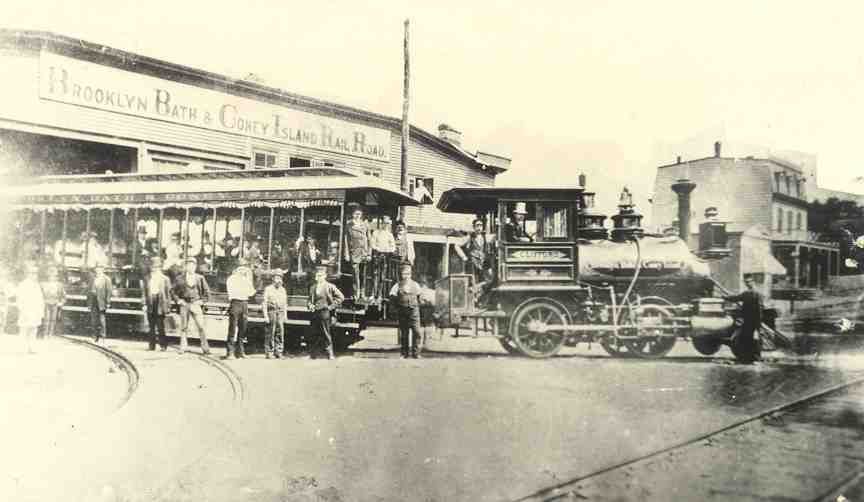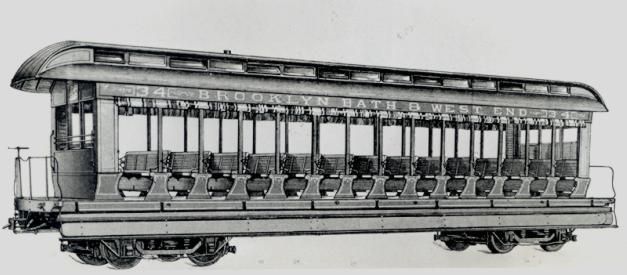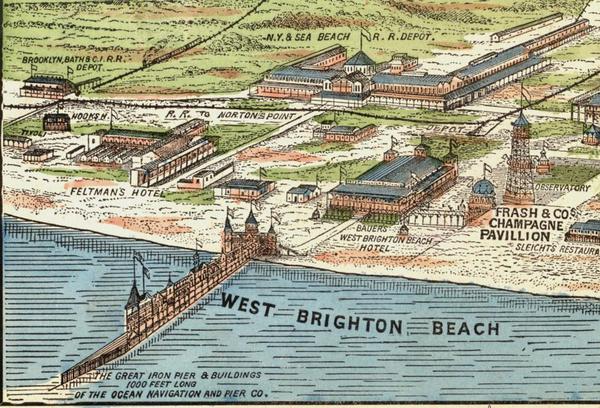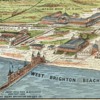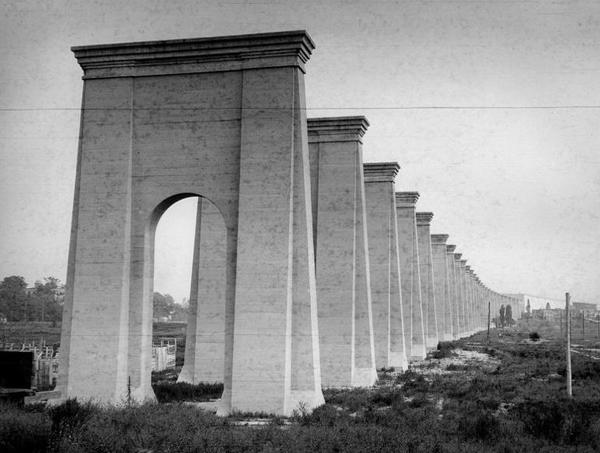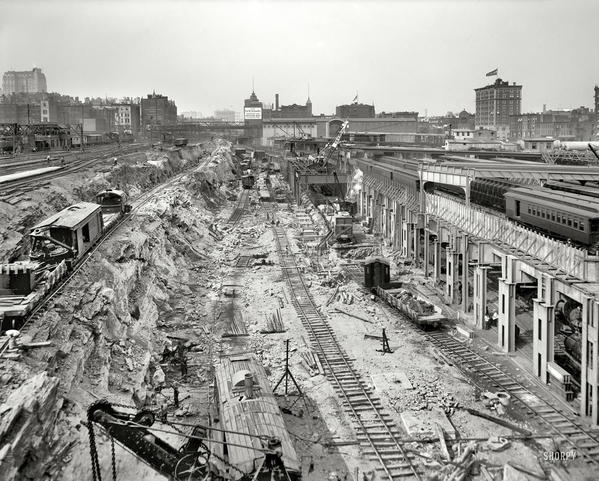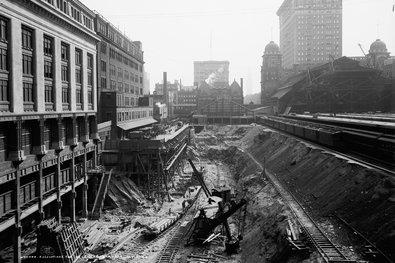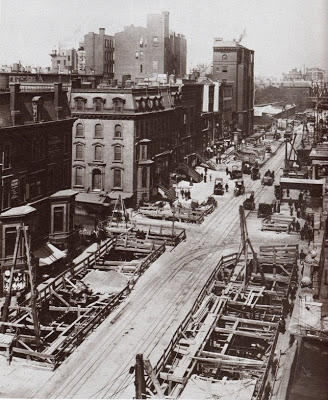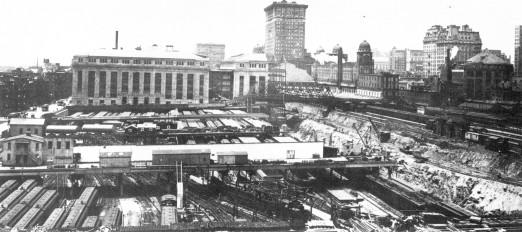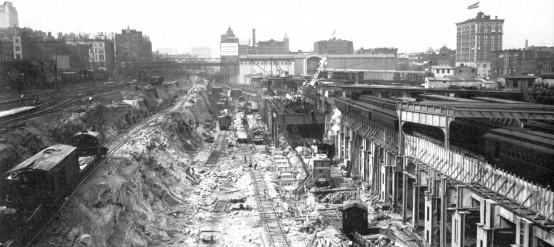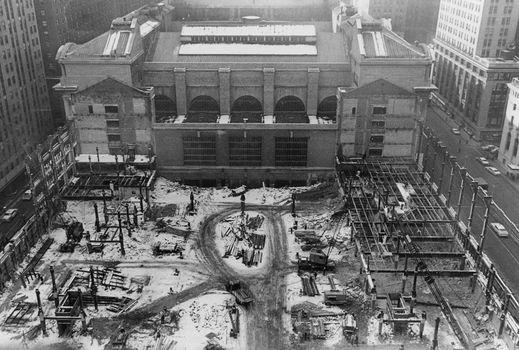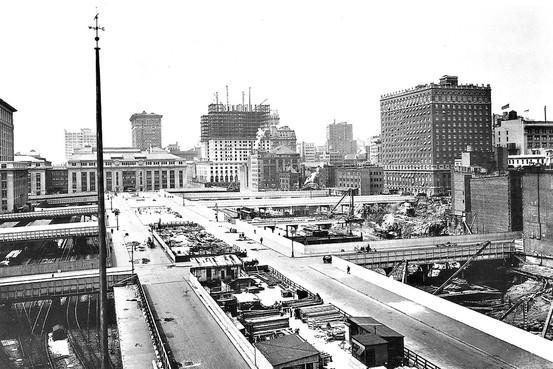In the BRT route map shown in the post just above, perhaps you may have noticed a bit of a BRT route to Canarsie shown in the upper right corner . So lets talk about the Canarsie line or todays "L" route
Its origins trace to the Brooklyn and Rockaway Beach Railroad, chartered December 24, 1863 and opened October 21, 1865, from the Long Island Rail Road in East New York to a pier at Canarsie Landing, very close to the current junction of Rockaway Parkway and the Belt Parkway, where ferries continued on to Rockaway. The Canarsie Railroad was chartered on May 8, 1906 as a BRT subsidiary. The line was partly elevated, and electrified with third rail on the elevated part and trolley wire on the rest, south of New Lots Avenue. The Long Island Rail Road, which had used the line north of New Lots to access their Bay Ridge Branch. The East New York terminus was extended several blocks along a section of line formerly used for "East New York Loop" service to the Fulton Street Elevated and the Broadway Elevated, at a point known as Manhattan Junction or later,Broadway Junction.
Service, first run on July 28, 1906, ran from Canarsie Landing to the Broadway Ferry at the foot of Broadway in Williamsburg, at the East River. Most of this route is in use today as the Jamaica Line. The route was later extended over the bridge and along the BMT Nassau Street Line to Canal Street and then Chambers Street.
The Dual Contracts subway expansion scheme around World War I saw the rebuilding of the complex train junction at Manhattan Junction into an even more complex flyover junction now known as Broadway Junction. The expansion extended south to the point at which the Canarsie and Fulton Street Elevateds diverged, including a six-track, three-platform station at Atlantic Avenue. The complex was rebuilt under traffic and opened in stages, reaching completion in 1919.
At the same time, the BRT moved to eliminate remaining operations that required elevated trains to operate under overhead wire. In most cases this meant using third rail on fully grade-separated lines. When third rail was extended on the Canarsie Line it was decided to extend this power mode only as far as the important station at Rockaway Parkway and Glenwood Road. Beyond that point, frequent grade crossings made third rail impractical. This portion of the line was converted to the Canarsie Shuttle using elevated cars in 1917 and converted to trolley cars in 1920.
One grade crossing was retained at East 105th Street despite the third rail, and was the last public rapid transit grade crossing in New York City. The crossing was removed in 1973.
There are many great photos of trains on the complex trackage at East New York where the Jamaica Broadway,Fulton Street and Canarsie lines mixed it up to allow service from the outlying branches to reach downtown Brooklyn and Manhattan by several routes . Adding to the complexity was trackage to access the East New York Shops and yards . The present subway extension from 8th avenue and 14th street through Brooklyns Williamsburg and Bushwick sections reaching the Elevated portion of the line in East New York was completed during the 1920's. Todays scene at these locations is much simpler as only the L service and Jamaica el service remain.
Here are a few photos that show the outer reaches of the Cabarsie line in the glory days. We have atrain set of Multi's , a 5 car articulated train set built in the 1930s and intended for use by the BMT on its older El lines in Brooklyn . New York City had other ideas about Elevated rail lines and the Multis saw service on the Canarsie line as an alternate. This set is arriving on Grade from Manhattan at the Canarsie Rockaway Parkway depot. You can see the Bluebirds in the Canarsie Yard.
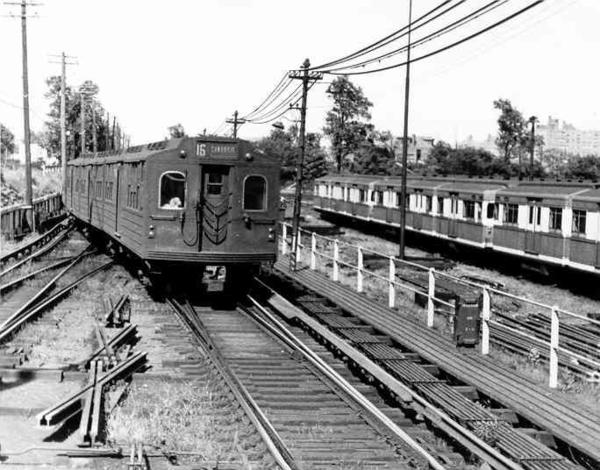
A set of Multis at the Wiiden Platform and in the yard we have the R-11s second Ave Prototype cars along with the Bluebirds. The oddballs were at home on the Canarsie line.
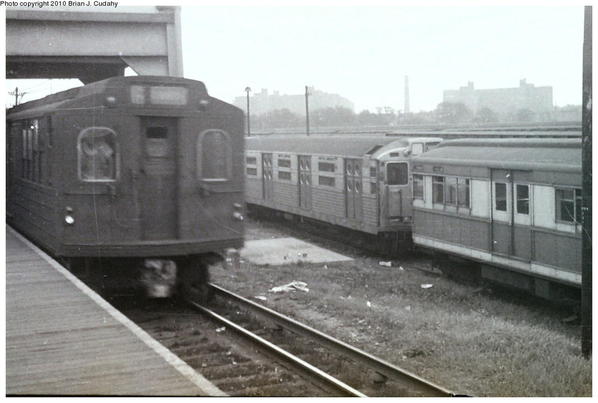
BMT standards worked this line as well and were original equipment when the subway extension to Manhattan was completed in the 1920s. They were on this line into the 1960s as I recall. This set is getting to make the run to Broadway Junction and on to Manhattan
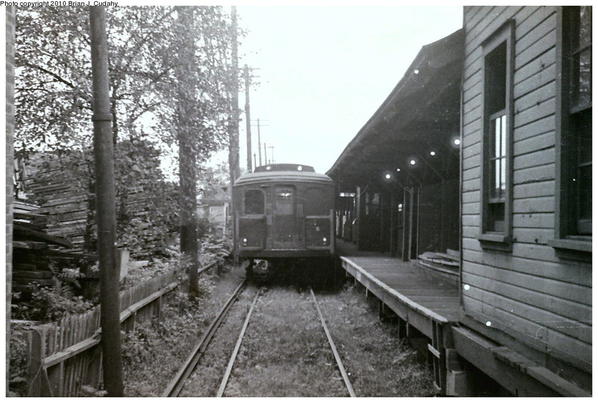
Here we have a set of Multis getting set to depart for Manhattan . Its the mid 30's and the Multis are almost new here. We have some travelers in their Sunday finest.
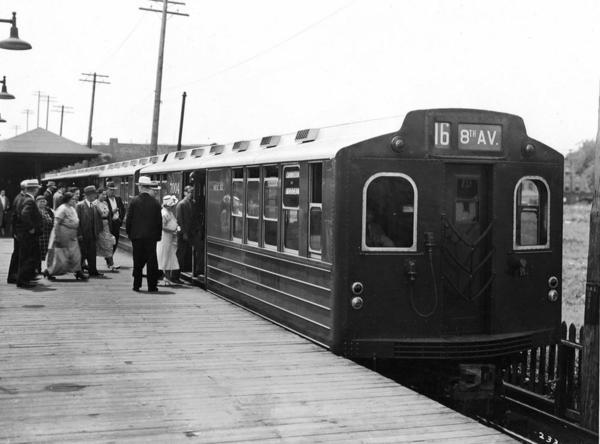
The last Photo is interesting. At the 42nd street station Concourse in Manhattan which connects the BMT 4th ave Broadway subway with the IRT 7thavenue line and the IRT Flushung line, there was a sign " to Canarsie" stuck up on one of the steel girders exposed in the concourse that directed travelers to Canarsie. The Canarsie line did not serve this station so the intent of the sign is curious. I wonder if its still there?
